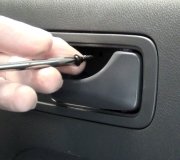This may require you to start a new question for a couple of reasons. First, these get categorized so others researching a similar problem can read the solutions before posting their own question. An addition here could be very helpful to someone, but they won't find it in any list.
More importantly, unlike at other sites, this became a private conversation between the two of us. As such, none of the other experts will see the new problem of have a chance to reply. That may not get you the help you need.
My expertise has more to do with '90s Chrysler products, but some of Ford's systems are similar in design, so let's see how far we get. The place to start is by reading and recording any diagnostic fault codes. Ford's method is by far the most tedious and it can be frustrating, but start by looking at this article:
https://www.2carpros.com/articles/ford-lincoln-mercury-obd1-1995-and-earlier-diagnostic-trouble-code-definition-and-retrieval
Be aware only those codes that refer to something that could adversely affect emissions will turn on the Check Engine light. About half of the codes do not turn that light on. Also, those codes never say to replace a part or that one is bad. They only indicate the circuit that needs further diagnosis, or the unacceptable operating condition. First we have to rule out wiring and connector terminal problems and mechanical problems associated with that part before spending our customer's money on that part. When a sensor or other part is referenced in a fault code, it is actually the cause of that code about half of the time.
If you have access to a scanner, that may make reading the fault codes easier. It is also possible there won't be any codes. A common cause of stalling, especially intermittently when hot, is a crankshaft position sensor or camshaft position sensor becoming heat-sensitive, then they work again after they cool down for about an hour. It is common for them to not set fault codes just from cranking the engine. They often need more time for the missing signal to be detected, as in when a stalled engine is coasting to a stop. This is where the scanner becomes a necessity. It will list both sensors with some type of indication as to whether or not their signals are showing up during cranking. The missing signal tells us which circuit we need to diagnose.
Do not disconnect the battery before you read the fault codes. Doing so will erase them, then that valuable information will be lost. Some fault codes will set again right away, but others take some time or certain conditions before they will show up.
Wednesday, March 22nd, 2023 AT 2:55 PM







